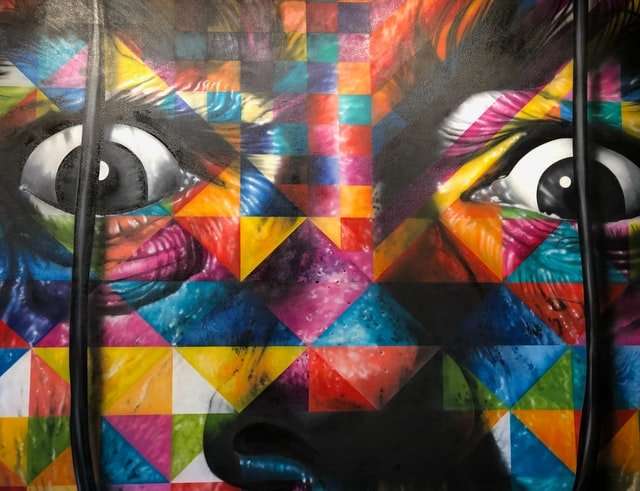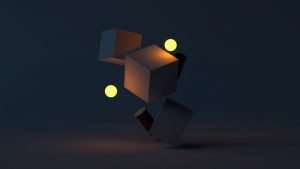Creating abstract art can be done by anyone whether you are a professional or not. All that is necessary is a little creativity and the right materials. By using the following tips, you will be able to create amazing abstract wall art with ease.
What You Will Need:
*A canvas
*Acrylic paints
*Spray paint in assorted colors (optional)
*A paint brush for each color used
*A picture frame (optional)
The Process:
1. First, decide on a color scheme. You can choose complementary colors such as red and green, or you can use similar colors such as blue and blue-green.
2. Create an outline of your painting on the canvas using a pencil or pen. This practice is not necessary if you prefer to work without outlines, but it helps to create uniformity in your art piece. If you use a picture frame, the outline of the frame will remind you how much space to fill with your design.
3. Fill in your outline with another layer of acrylic paint in the color of your choice. If you would like to create multiple layers in one area of your piece, wait until each layer dries before applying another layer of paint.
Our expertise has been honed over years of experience and our work is always of the highest quality. We have a huge range of abstract artworks that are available in a variety of styles and sizes. Our aim is to design, create and print high-quality artworks for clients across the globe.
Tired of the commercialism in today’s world? Why not turn your new home into a space where you can create your own masterpieces with our guidance? Our abstract wall art pieces are designed to be easy to install and are versatile enough to fit into any room.
We use only the highest quality materials to ensure that your artwork lasts for years to come. The designs on our abstract wall art pieces can also be customized to suit your specifications, so you never have to settle for anything less than what you like.
To find out more about our amazing range of abstract wall art pieces, please contact us today!
Abstract art has been around since the beginning of time. It is the oldest form of art in existence. The abstract artists are usually trying to communicate a feeling or a mood as opposed to trying to communicate a story or an idea.
Found objects, paint, clay, and other materials are used to create this kind of artwork. Abstract wall art is used as an accent piece in many homes and businesses around the world. This type of artwork can be quite different from one person to the next. Some people will use photographs, oil paintings, or other forms of art that are more easily recognized by individuals.
Abstract art is usually more of an inspiration than a step-by-step process. The artist, being the creator of all things, is allowed to make up the rules as they go along, with no need to include a list of supplies.
This means that if you want to create your own abstract art you will have to be resourceful and do a little research on your own.
You may not be able to find all of the items needed for this project at one store, so visit a variety of stores to find all the items and materials you need.
The first thing you will need is paint. You can either use acrylic or waterbased paints. Acrylic paints are great for beginners because they dry faster than water based paints; however, water based paints are more common. Choose what type suits you best. You will also need a tape measure, pencils, paper and canvas panels (a canvas panel is a blank canvas that comes in many sizes).
The next thing you will need is brushes. You can choose any kind of brushes that you like; however, it’s good to use natural bristles that won’t shed on your painting such as: sable hair, squirrel or synthetic fibers. Depending on your painting style you may also want to use
Abstract art is a form of art that uses a visual language of shape, form, color and line to create a composition which may exist with a degree of independence from visual references in the world. Western art had been, from the Renaissance up to the middle of the 19th century, underpinned by the logic of perspective and an attempt to reproduce an illusion of visible reality. The arts of cultures other than the European had become accessible and showed alternative ways of describing visual experience to the artist. By the end of the 19th century many artists felt a need to create a new kind of art which would encompass the fundamental changes taking place in technology, science and philosophy. The sources from which individual artists drew their theoretical arguments were diverse, and reflected the social and intellectual preoccupations in all areas of Western culture at that time.
Abstract art, non-figurative art, nonrepresentational art, and non-objective art are loosely related terms. They are similar, but perhaps not of identical meaning. Abstraction indicates a departure from reality in depiction of imagery in art. This departure from accurate representation can be slight, partial, or complete. Total abstraction bears no trace of any reference to anything recognizable. In geometric abstraction, for instance, one might draw only triangles
Abstract art is a form of art that uses a visual language of shape, form, color and line to create a composition which may exist with a degree of independence from visual references in the world. Western art had been, from the Renaissance up to the middle of the 19th century, underpinned by the logic of perspective and an attempt to reproduce an illusion of visible reality. The arts of cultures other than the European had become accessible and showed alternative ways of describing visual experience to the artist. By the end of the 19th century many artists felt a need to create a new kind of art which would encompass the fundamental changes taking place in technology, science and philosophy.
Towards abstraction
In his book “The Language of Vision” (1880) Victor Cousin describes how, in different cultures and times, forms in art evolved which did not were not tied to immediate reality but aimed at expressing emotions. He stated that “the instinctive desire of mankind is directed towards the infinite.” Artists such as George Seurat, Paul Gauguin and Vincent van Gogh were looking for more realism in their work and trying to convey emotional feeling rather than physical reality. By removing details that may be seen as superfluous or unimportant van Gogh’s paintings became more abstract.
Abstract art is a form of art that uses a visual language of shape, form, color and line to create a composition which may exist with a degree of independence from visual references in the world. Western art had been, from the Renaissance up to the middle of the 19th century, underpinned by the logic of perspective and an attempt to reproduce an illusion of visible reality. The arts of cultures other than the European had become accessible and showed alternative ways of describing visual experience to the artist. By the end of the 19th century many artists felt a need to create a new kind of art which would encompass the fundamental changes taking place in technology, science and philosophy. The sources from which individual artists drew their theoretical arguments were diverse, and reflected changes in the role that art was making for itself in society.



